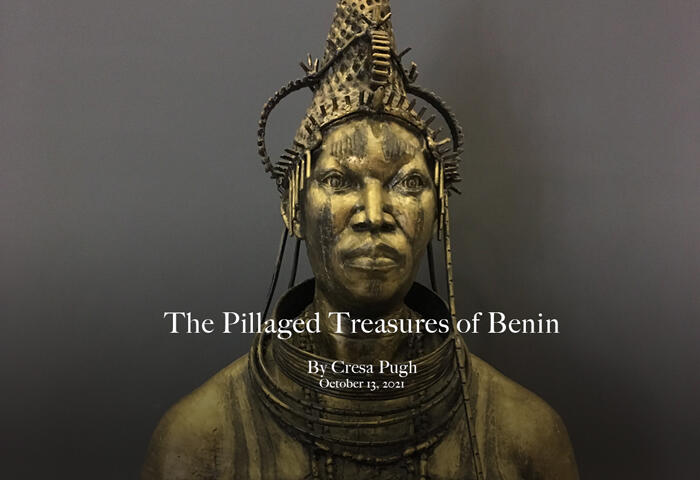Tracing the pathway of artifacts stolen from the Benin Kingdom in 1897 reveals a deeper understanding of first-world entitlement and dominance that still prevails today.
Cresa Pugh, a doctoral student in sociology, has long been interested in the question of how the past bears on the present, and in particular the ways in which historic injustices manifest through continuing cycles of oppression.
A few years ago, she visited the Victoria and Albert Museum in London to see the Maqdala exhibition, featuring artifacts the British had looted from Ethiopia in an 1868 invasion. For decades, museum officials had declined requests for permanent repatriation of the objects. On subsequent visits to the British Museum, she found comparable stories extending across the continent and globe. The journey of the Benin Bronzes was one of them, and she explores their history within her dissertation.
“It made me wonder what it must be like to grow up in a place where, for generations, your history has been kept in the hands of others, and what it means to fight back,” Pugh reflects. Her storymap below uses imagery to trace the journey of the Benin sculptures—cultural artifacts that continue to be claimed by the West.
VISIT STORYMAP: THE PILLAGED TREASURES OF BENIN
Cresa Pugh is a Graduate Student Associate at the Weatherhead Center for International Affairs. She is a PhD Candidate in the Department of Sociology at Harvard University and in the Program in Social Policy at Harvard Kennedy School. Her research interests include postcolonial and historical sociology; anti-imperialism and the British empire; ethnic and religious violence; museums and memory; Southeast Asia, particularly Myanmar; and sub-Saharan Africa, particularly Nigeria.

